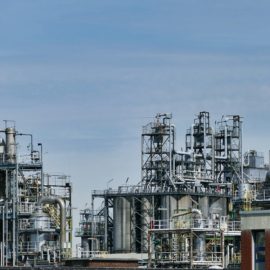
This is what the birds should look like. Clean and perky and looking forward to a swim. That is not the case near a refinery after Hurricane Ida.
Louisiana wildlife officials say they have documented more than 100 oil-soaked birds after crude oil spilled from a refinery flooded during Hurricane Ida. The Louisiana Department of Wildlife and Fisheries said Thursday that a growing number of oiled birds had been observed within heavy pockets of oil throughout the Phillips 66 Alliance Refinery in Belle Chasse, Louisiana, as well as nearby flooded fields and retention ponds along the Mississippi River. Jon Wiebe, a biologist running the state restoration program, said 10 oiled birds have been captured and transported to a rehabilitation location for cleaning. Five additional dead birds were recovered and bagged as evidence, he said. Wiebe said efforts to capture and save more birds are ongoing. The affected species include black-bellied whistling ducks, blue-winged teal and a variety of egrets. Other animals were also seen covered in oil, include alligators, nutria and river otters.
politico.com
As noted, the reports keep coming in. The Alliance refinery is were a levee was breached.
A summary issued Thursday by the Environmental Protection Agency said it had received 43 notifications of significant inland oil spills and chemical releases in its jurisdiction after Ida. The agency’s compliance arm has issued 10 requests to facility operators seeking information to determine whether federal environmental laws were violated during the storm, potentially triggering penalties and fines. That is a small fraction of the 1,539 reports of pollution a U.S. Coast Guard hotline has received since the Category 4 storm made landfall made landfall Aug. 29 at Port Fourchon, the primary port for the offshore oil and gas industry. The Coast Guard said Thursday it was actively supervising the cleanup and mitigation efforts at 564 sites. Another 197 reports were listed as unverified because there was no remaining evidence of pollution. The Associated Press first reported the spill at the Alliance Refinery on Sept. 1 after reviewing aerial images captured by a National Oceanic and Atmospheric Administration aircraft. In the days after the hurricane, Phillips 66 repeatedly sought to downplay reports of damage at the company’s sprawling refinery.
The refinery tried to white wash the damage saying all was well. They were wrong.
Asked about reports of levee failures near the refinery the day after Ida hit, Phillips 66 spokesman Bernardo Fallas told AP there was “some water” in the facility and stressed that operations were shut down in advance of the storm. Asked two days after the storm about potential environmental hazards emanating from the facility, Fallas referred a reporter to a statement on the company’s website saying its response is focused “on ensuring the safety and well-being of our employees and our surrounding communities.” On Day Three, after the AP sent Phillips 66 aerial photos showing extensive flooding at the refinery and what appeared to be petroleum in the water, Fallas conceded the company could had “discovered a sheen of unknown origin in some flooded areas” of the refinery and that all pollution had been “secured and contained within refinery grounds” at that time. A Louisiana Department of Environmental Quality assessment team sent to the refinery last week reported a sizable spill of heavy crude oil at the site was being addressed with booms and absorbent pads. A levee meant to protect the plant had breached, allowing floodwaters to flow in during the storm and then back out as the surge receded. Despite the gap in the levee remaining open for days after the storm, Fallas once again asserted Thursday no oil spilled beyond the land owned by Phillips 66. “The breach has been secured,” Fallas said Thursday. “Clean-up crews continue to remove oil and sheen contained within some flooded areas of the refinery. There has been no offsite impact. We continue to work with all appropriate regulatory agencies.”
The refinery has no idea of how much was spilled and the agencies cleaning it up also are in the dark.
No estimate for how much oil might have spilled from the refinery has yet been made public by state or federal regulators. When fully operational, the Alliance Refinery can process more than 255,000 barrels of crude oil per day into gasoline and other petroleum products. The company listed the aging refinery for sale last month, before the storm hit, citing poor market conditions. The facility remained shut down Thursday, with no timetable to reopen. Following inquires from AP, Fallas also confirmed Thursday that a Phillips 66 pipeline in an uninhabited area outside Paradis, Lousiana, leaked during Ida. Records show the company reported to the Coast Guard on Aug. 31 that 2,700 barrels of isobutane, a liquified flammable gas often used to fuel camping stoves, had spilled. “The site was isolated and brought under control last week,” Fallas said Thursday. “The product vaporized to the atmosphere when it was released; there was no impact to soil or water. The pipeline remains shut down while repairs are underway.”
The states touts the money oil brings in. Does anyone count the costs? This is definitely part of the costs of oil.



